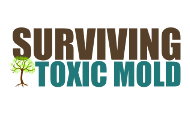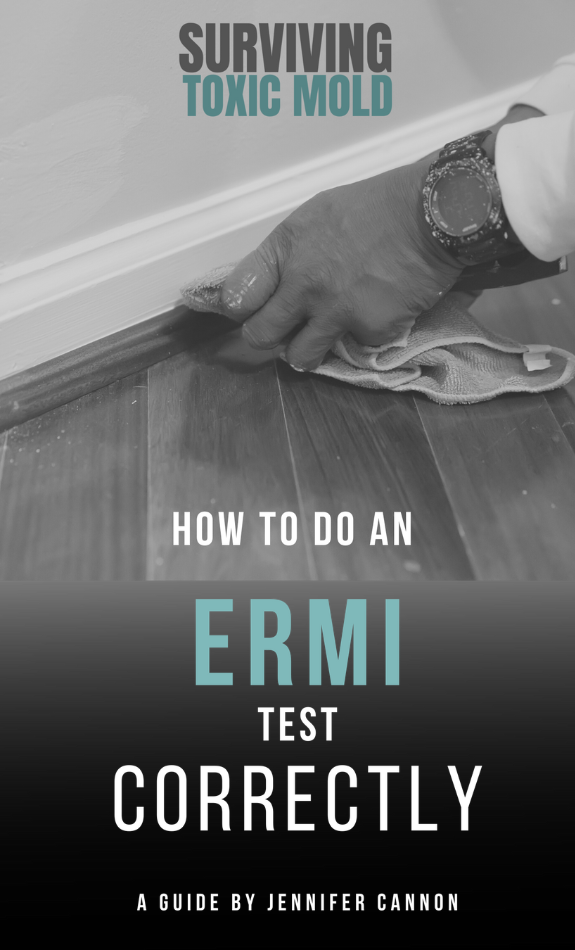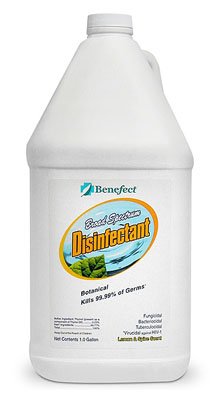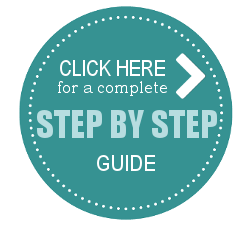|
A RESOURCE GUIDE FOR MOLD INSPECTORS & REMEDIATORS
INSPECTORS: GET YOUR
Mycotoxicosis / Toxic Mold Exposure / CIRS (Chronic Inflammatory Response Syndrome)
BibliographyBelt RJ, Haas CD, Joseph U, Goodwin W, Moore D, and Hoogstraten B, "Phase I Study of Anguidine Administered Weekly," Cancer Treat Rep, 63, 1979, pp. 1993-1995. Bonomi A, Quarantelli A, Zambin EM, et al., "Effects of Aflatoxin B1 Contaminated Rations on Productive and Reproductive Efficiency in Swine (Experimental Contribution)," Rivista Di Scienza Dell'Alimentazione, 24, 1995, pp. 361-384. Buck WB, Beasley VR, and Swanson SP, Toxicologic and Analytical Studies with T-2 and Related Trichothecene Mycotoxins, Ft. Detrick, Md.: U.S. Army Medical Research and Development Command, DTIC ADA172207, 1983. Bukowski R, Vaughn C, Bottomley R, and Chen T, "Phase II Study of Anguidine in Gastrointestinal Malignancies: A Southwest Oncology Group Study," Cancer Treat Rep, 66, 1982, pp. 381-383. Bunner D, Trichothecene Mycotoxins Intoxications: Signs, Symptoms, Pathophysiology, and Management (Based On Initial Laboratory Animal Studies and Review of Phase I Trails as Anticancer Agents in Man, Ft. Detrick, Md.: U.S. Army Medical Research Institute of Infectious Diseases, 1983. Bunner D, Wannemacher R, Neufeld H, Hessler C, Parker G, Cosgriff T, and Dinterman R, "Pathophysiology of Acute T-2 Intoxication in the Cynomolgus Monkey and Comparison to the Rat as Model," Ft. Detrick, Md.: U.S. Army Medical Research Institute of Infectious Diseases, DTIC ADA135983, 1983. Bunner DL, Neufeld HA, Brennecke LH, Campbell YG, Dinterman RE, and Pelosi JG, Clinical and Hematologic Effects of T-2 Toxin in Rats, Ft. Detrick, Md.: U.S. Army Medical Research Institute of Infectious Diseases, DTIC ADA158874, 1985. Chan PKC, and Gentry PA, "LD50 Values and Serum Biochemical Changes induced by T-2 Toxin Rats and Rabbits," Toxicol Appl Pharmacol, 73, 1984, pp. 402-410. Coppock RW, Gelberg HB, Hoffmann I, and Buck WB, "The Acute Toxicopathy of Intravenous Diacetoxyscirpenol (Anguidine) Administration in Swine," Fund Appl Toxicol, 5, 1985, pp. 1034-1049. Cosgriff TM, Bunner DL, Wannemacher RW, Jr., Hodgson LA, and Dinterman RE, "The Hemostatic Derangement Produced by T-2 Toxin in Cynomolgus Monkeys," Toxicol Appl Pharmacol, 82, 1986, pp. 532-539. Coulombe RA, Jr., "Symposium: Biological Action of Mycotoxins," J Dairy Sci, 76, 1993, pp. 880-891. Coulombe RAJ, Huie JM, Ball RW, Sharma RP, and Wilson DW, "Pharmacokinetics of Intratracheally Administered Aflatoxin B1," Toxicol Appl Pharmacol, 109, 1991, pp. 196-206. Creasia DA, Thurman JD, Jones LJI, et al., "Acute Inhalation Toxicity of T-2 Mycotoxin in Mice," Fund Appl Toxicol, 8, 1987, pp. 230-235. Croft WA, Jarvis BB, and Yatawara CS, "Airborne Outbreak of Trichothecene Toxicosis," Atmos Environ, 20, 1986, pp. 549-552. Crossland A, and Townsend A, "Observations, Impressions, Pitfalls and Recommendations from Field CBW Research Among Refugees in Southeast Asia," in First World Congress: New Compounds in Biological Warfare: Toxicological Evaluation, Proceedings, Ghent, Belgium: State University of Ghent and National Science Foundation, 1984. Di Paolo N, Guarnieri A, Gariso G, Sacchi G, Mangiarotti AM, and Di Paolo M, "Inhaled Mycotoxins Lead to Acute Renal Failure," Nephrol Dial Transplan, 9, 1994, pp. 116-120. Diggs CH, Scoltock MJ, and Wiernik PH, "Phase II Evaluation of Anguidine (NSC-141537) for Adenocarcinoma of the Colon or Rectum," Cancer Clin Trials, Winter 1978, pp. 297-299. Dugyala RR, Kim YW, et al., "Effects of Aflatoxin B1 and T-2 Toxin on the Granulocyte-Macrophage Progenitor Cells in Mouse Bone Marrow Cultures," Immunopharmacol, 27, 1994, pp. 57-65. Fontelo PA, Beheler J, Bunner DL, and Chu FS, "Detection of T-2 Toxin by an Improved Radioimmunoassay," Appl Environ Microbiol, 45, 1983, pp. 640-643. Forgacs J, "Stachybotrytoxicosis," in Kadis et al., eds., Microbial Toxins VIII, New York: Academic Press, 1972, pp. 294-298. Fricke RF, "Decreased Toxicity of T-2 Mycotoxicosis in Mice Pre-Treated with Microsomal Enzyme Inducers," Abstract #1955, Fed Proc, 42, 1993, p. 626. Goodwin W, Stephens R, McCracken JD, and Groppe C, "Therapy for Advanced Colorectal Cancer with a Combination of 5FU and Anguidine: A Southwest Oncology Group Study," Cancer Treat Rep, 65, 1981, p. 359. Griffiths BB, Rea WJ, Johnson AR, and Ross GH, "Mitogenic Effects of Mycotoxins on T4 Lymphocytes," Microbios, 86, 1996, pp. 127-134. Haig AM, Jr., Chemical Warfare in Southeast Asia and Afghanistan, Washington, D.C.: U.S. Department of State, 1982. Hendry KM, and Cole EC, "A Review of Mycotoxins in Indoor Air," J Toxicol Environ Health, 38, 1993, pp. 183-198. Huff WE, Harvey RB, Kubena LF, Rottinghause GE, "Toxic Synergism Between Aflatoxin and T-2 Toxin in Broiler Chickens," Poult Sci, 67 (10), October 1988, pp. 1418-1423. Jagadeesan V, Rukmini C, Vijayaraghavan M, and Tulpule PG, "Immune Studies with T-2 Toxin Effect of Feeding and Withdrawal in Monkeys," Food Chem Toxicol, 20 (1), February 1982, pp. 83-87. Jarvis BB, "Tricothecene Mycotoxins: Preparation, Analysis, and Chemical Reactivity," College Park, Md.: University of Maryland, 1985. Johnsen H, Edden E, Lie O, Johnsen BA, and Fonnum F, "Metabolism of T-2 Toxin by Rat Liver Carboxytesterase," Biochem Pharmacol, 35, 1986, pp. 1469-1473. Kemppainen BW, Riley RT, Pace JG, and Hoerr FJ, "Effects of Skin Storage Conditions and Concentration of Applied Dose on [3H]T-2 Toxin Penetration Through Excised Human and Monkey Skin," Fund Chem Toxic, 24, 1986, pp. 221-227. Kemppainen BW, Riley RT, Pace JG, Hoerr FJ, and Joyave J, "Evaluation of Monkey Skin as a Model for in Vitro Percutaneous Penetration and Metabolism of [3H]T-2 Toxin in Human Skin," Fund Appl Toxicol, 7, 1986, pp. 367-375. Lee SC, Beery JT, and Chu FS, "Immunoperoxidase Localization of T-2 Toxin," Appl Pharmacol, 72, 1984, pp. 228-235. Lutsky I, Mor N, Yagen B, and Joffe AZ, "The role of T-2 Toxin in Experimental Alimentary Toxic Aleukia: A Toxicity Study in Cats," Toxic Appl Pharmacol, 43, 1978, pp. 111-124. Mayer CF, "Endemic Panmyelotoxicosis in the Russian Grain Belt, Part One: The Clinical Aspects of Alimentary Toxic Aleukia (ATA): A Comprehensive Review," Mil Surg, 113, 1953a, pp. 173-189. Mirocha CJ, Pawlosky RJ, and Chatterjee K, "Analytical Methodology, Detection of Trichothecenes from Southeast Asian Samples and Their Residue in Animal Tissue," First World Congress: New Compounds in Biological Warfare: Toxicological Evaluation, Proceedings, Ghent, Belgium: State University of Ghent and National Science Foundation, 1984. Murphy WK, Burgess MA, Valdivieso M, Livingston RB, and Bodey GP, Freireich EJ, "Phase I Clinical Evaluation of Anguidine," Cancer Treat Rep, 62, 1978, pp. 1497-1502. NAS-see National Academy of Sciences. National Academy of Sciences, National Research Council, Committee on Toxicology, Possible Long-Term Health Effects of Short-Term Exposure to Chemical Agents, Vol. 1: Anticholinesterases and Anticholinergics, Washington, D.C.: National Academy Press, 1982. National Academy of Sciences, Protection Against Trichothecene Mycotoxins, Washington, D.C.: National Academy Press, 1983. Otto S, The Ocular Action of Dichlorethyl Sulfide (Mustard Gas) in Man, as Seen at Edgewood Arsenal, Edgewood, Maryland, DTIC AD495 508, 1946. Pace JG, Watts MR, Burrows EP, et al., Fate and Distribution of 3H-Labeled T-2 Mycotoxin in Guinea Pigs, Toxicol Appl Pharmacol, 80, 1985, pp. 377-385. Rukmini C, Prasad JS, and Rao K, "Effects of Feeding T-2 Toxin to Rats and Monkeys," Food Cosmet Toxicol, 18, 1980, pp. 267-269. Schiefer HB, "Systemic Effects of Topical Application of Trichothecenes in Rodents," First World Congress: New Compounds in Biological Warfare: Toxicological Evaluation, Proceedings, Ghent, Belgium: State University of Ghent and National Science Foundation, 1984. Schiefer HB, and Hancock DS, "Systemic Effects of Topical Application of T-2 Toxin in Mice," Toxicol Appl Pharmacol, 76, 1984, pp. 464-472. Schnurr PP, Friedman MJ, and Green BL, "Post-Traumatic Stress Disorder Among World War II Mustard Gas Test Participants," Mil Med, 161, 1996, pp. 131-16O. Schultz GP, Chemical Warfare in Southeast Asia and Afghanistan: An Update, Washington, D.C.: U.S. Department of State, 1982. Seagrave S, Yellow Rain: A Journey Through the Terror of Chemical Warfare, New York: M. Evans and Company, Inc., 1981. Segal R, Milo I, Joffe A, and Yogen B, "Tricothecene Induced Hemolysis," Toxicology and Applied Pharmacology, 70, 1983, p. 343. Segal R, Milo I, Joffe A, and Yogen B, "Tricothecene Induced Hemolysis," Toxicology and Applied Pharmacology, 70, 1983, p. 343. Smith KJ, Hurst CG, Moeller RB, Skelton HG, and Sidell FR, Sulfur "Mustard: Its Continuing Threat as a Chemical Warfare Agent, the Cutaneous Lesions Induced, Progress in Understanding Its Mechanism of Action, Its Long-Term Health Effects, and New Developments for Protection and Therapy," J Am Acad Derm, 32, 1995, pp. 765-766. Smith TC, Gray GC, and Knoke JD, "Post-War Non-Federal Hospitalization Experience of U.S. Veterans of the Persian Gulf War," Conference on Federally Sponsored Gulf War Veterans' Illnesses Research, Conference Proceedings, June 17-19, 1998, p. 48. Smith WJ, and Dunn MA, "Medical Defense Against Blistering Chemical Warfare Agents," Arch Dermatol, 127, 1991, pp. 1207-1213. Smoragiewicz W, Cossette B, Boutard A, and Krzystyniak K, "Trichothecene Mycotoxins in the Dust of Ventilation Systems in Office Buildings," Int Arch Occup Environ Health, 65, 1993, pp. 113-117. Solberg VB, Broski FH, Dinterman RE, and George DT, "Penetration of Tritiated T-2 Mycotoxin Through Abraded and Intact Skin and Methods to Decontaminate Tritiated T-2 Mycotoxin from Abrasions," Toxicol, 28, 1990, pp. 803-812. Solberg VB, Broski FH, Dinterman RE, and George DT, "Penetration of Tritiated T-2 Mycotoxin Through Abraded and Intact Skin and Methods to Decontaminate Tritiated T-2 Mycotoxin from Abrasions," Toxicol, 28, 1990, pp. 803-812. Stahl CJ, Green CC, and Farnum JB, "The Incident at Tuol Chrey: Pathologic and Toxicologic Examinations of a Casualty After Chemical Attack," J Foren Sci, 30, 1985, pp. 317-337. Thigpen JT, Vaughn C, and Stuckey WJ, "Phase II Trial of Anguidine in Patients with Sarcomas Unresponsive to Prior Chemotherapy: A Southwest Oncology Group Study," Cancer Treat Rep, 65, 1981, pp. 881-882. Thompson AR, Inhibition of Thrombin by Sarin, DTIC AD695618, 1969. Thompson WL, and Wannemacher RW, Jr., "Detection and Quantification of T-2 Mycotoxin with a Simplified Protein Synthesis Inhibition Assay," Appl Environ Microbiol, 1984, pp. 1176-1180. Thurman JD, Creasia DA, Johnson AJ, "Adrenal Cortical Necrosis Caused by T-2 Mycotoxicosis in Female, but Not Male, Mice," Am J Vet Res, 47, 1986, pp. 1122-1124. Trusal, LR, "Stability of T-2 Mycotoxin in Aqueous Media," Applied and Environmental Microbiology, November 1985, pp. 1311-1312. Tutelyan VA, and Kravchenko LV, New Data on Metabolism and Action Mechanism of Mycotoxins, Vestnik Akademii Meditsinskikh Nauk SSSR, trans. from Russian, 1981, pp. 88-89. U.S. Army Command and General Staff College, Chemical and Biological Weapon Employment, Ft. Leavenworth, KS: U.S. Army Command and General Staff College, 1963. U.S. Army Medical Research Institute of Chemical Defense, Medical Management of Chemical Casualties Handbook, Aberdeen Proving Ground, Md., 1995. U.S. Army Medical Research Institute of Infectious Diseases, "Information Sheet: Trichothecene Mycotoxins: Intoxications and Experimental Therapy," Ft. Detrick, Md., 1983. U.S. Army, Potential Military Chemical/Biological Agents and Compounds, FM 3-9, NAVFAC P-467, AFR 355-7, December 12, 1990. U.S. Army, XVIII Corps, Dusty Agents Implications for Chemical Warfare Protection (last accessed February 18. 2000, at http://www.gulflink.osd.mil/ Ueno Y, "Toxicological Features of T-2 Toxins and Related Tricothecenes," Fundamental and Applied Toxicology, 4, 1984, pp. S124-S132. Ueno Y, Developments in Food Science 4, Trichothecenes--Chemical, Biological, and Toxicological Aspects, Tokyo: Kodansha, Ltd., 1983. Ueno Y, Muto A, and Kobayashi J, Toxicological Properties of T-2 Toxin and Related Trichothecenes, in Heyndrickx (1984), pp. 160-172. Umeuchi H, Kikuchi C, Matsuoka Y, Sunagane N, Uruno T, and Kubota K, "T-2 Toxin a Mycotoxin from Fusarium Fungi Effect on Learning Ability of Mice" (abstract), Jpn J Pharmacol, 71 (Suppl 1), 1996, pp. 102P. United Nations Special Commission, Report to the Security Council, New York: United Nations, 1991. United Nations, Use of Chemical Weapons by Iraqi Regime Report of the Specialists Appointed by the Secretary-General to Investigate Allegations by the Islamic Republic of Iran Concerning the Use of Chemical Weapons, New York, NY: United Nations, 1984. UNSCOM--see United Nations Special Commission. USAMRIID--see U.S. Army Medical Research Institute of Infectious Diseases. Venturini MC, Quiroga MA, Risso MA, Lorenzo CD, Omata Y, Venturini L, and Godoy H, "Mycotoxin T-2 and Aflatoxin B1 as Immunosuppressors in Mice Chronically Infected with Toxoplasma gondii," J Comp Pathol, 115 (3), October 1996, pp. 229-237. Wang J, Wilson JR, and Fitzpatrick DW, "Central Effects of T-2 Toxin, a Trichothecene Mycotoxin," abstract, Soc Neurosci, 18, 1992, p. 1600. Wannemacher R, Bunner D, Pace J, Neufeld H, Brenecke L, and Dinterman R, "Dermal Toxicity of T-2 Toxin in Guinea Pigs, Rats, and Cynomolgus Monkeys," Fort Detrick, Md.: U.S. Army Medical Research Institute of Infectious Diseases, DTIC ADA133130, 1983. Wannemacher RW Jr., and Wiener SL, "Trichothecene Mycotoxins," in Sidell, Takafuji, and Franz (1997), pp. 655-676. Watson AP, Ambrose KR, Friffin GD, Leffingwell SS, Munro NB, and Waters LC, "Health Effects of Warfare Agent Exposure: Implications for Stockpile Disposal," Environ Prof, 11, 1989, pp. 335-353. Watson AP, and Griffin GD, "Toxicity of Vesicant Agents Scheduled for Destruction by the Chemical Stockpile Disposal Program," review, Environ Health Perspect, 98, 1992, pp. 259-280. Watson BW, George B, Tsouras P, and Cyr BL, Military Lessons of the Gulf War, London: Greenhill Books, 1991. Watson SA, Mirocha CJ, and Hayes AW, "Analysis for Trichothecenes in Samples from Southeast Asia Associated with `Yellow Rain,'" Fund Appl Toxicol, 4, 1984, pp. 700-717. Yap HY, Murphy WK, DiStefano A, Blumenschein GR, and Bodey GP, "Phase II Study of Anguidine in Advanced Breast Cancer," Cancer Treat Reps, 63, 1979, pp. 789-791. Yarom R, Sherman Y, More R, Ginsburg I, Borinski R, and Yagen B, "T-2 Toxin Effect in Bacterial Infection and Leukocyte Functions," Toxic Appl Pharmacol, 75, 1984, pp. 60-68. |
|
Do you think you might have mold in your home, place of business or school? Are you or someone you love suffering from an unknown illness that doctors can't diagnose? Is mold making you sick? Go to our Step by Step and start Surviving Toxic Mold. |








